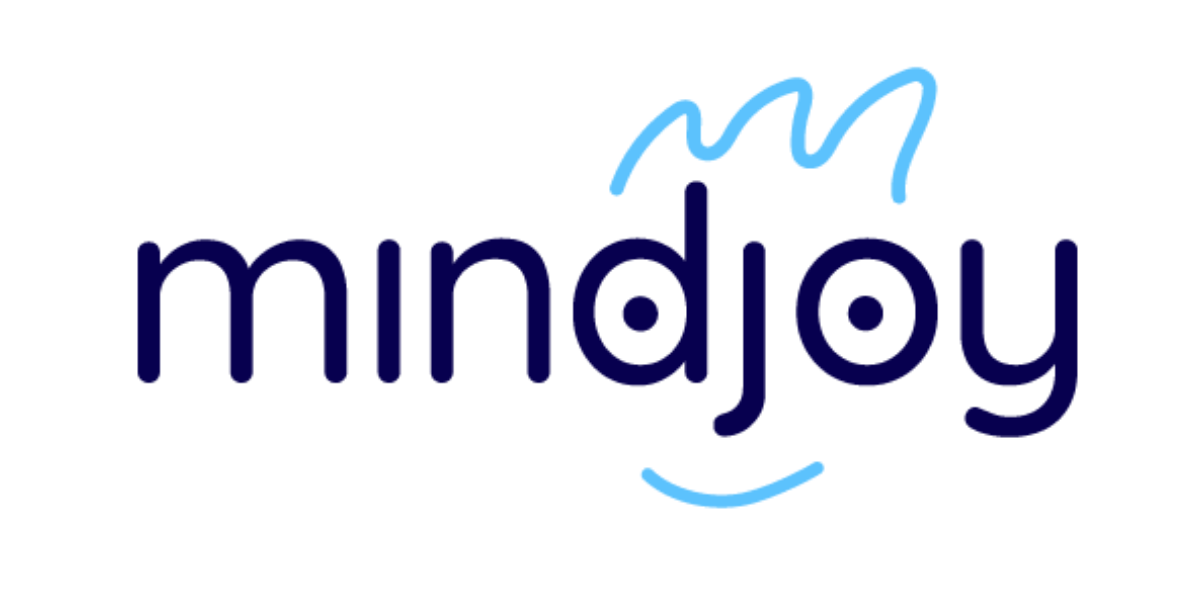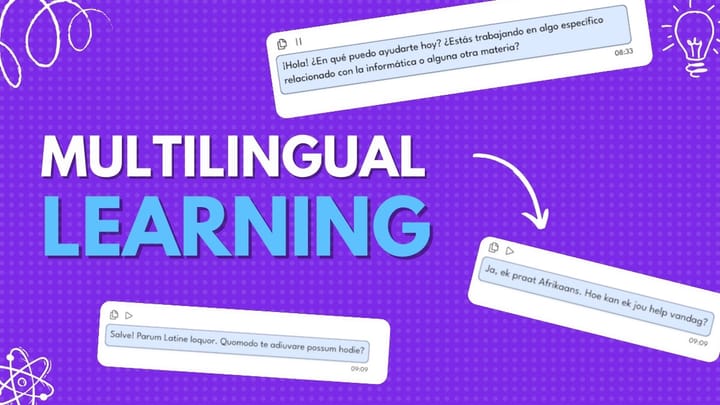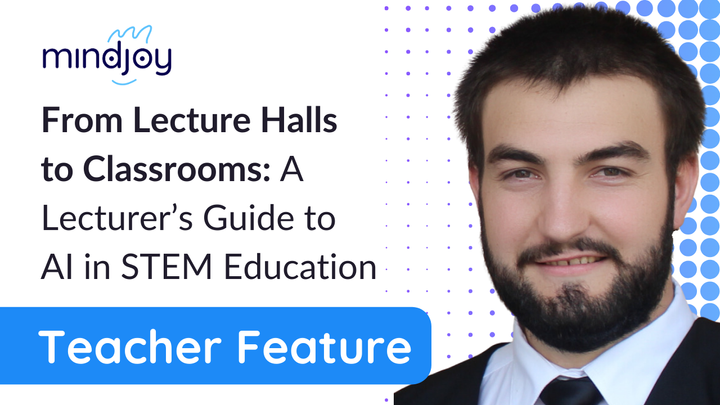Bloom's Generative Taxonomy
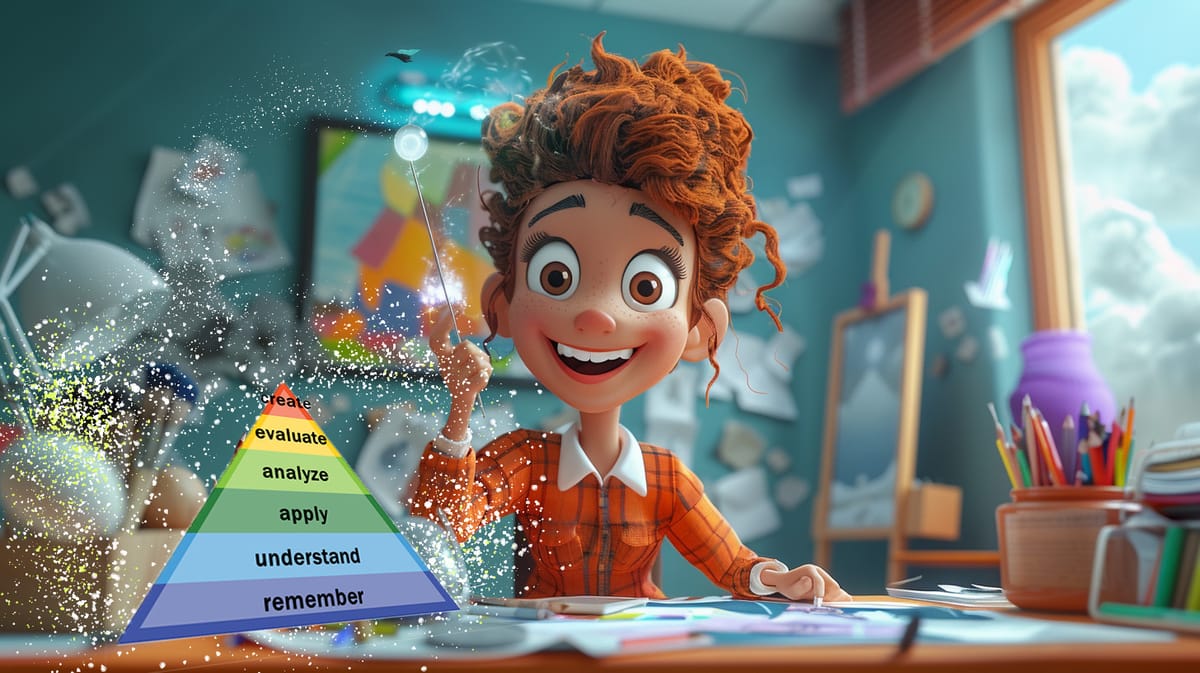
This week, David's been delving into the implications of generative AI on Bloom's Taxonomy, particularly the top tier of 'Create.' As AI evolves, the ease of generating creative outputs with minimal effort challenges traditional notions of student mastery and knowledge acquisition. We may need to revise this to adapt and ensure meaningful engagement and deeper learning in the AI-enhanced classroom.
We're living in the world of generative AI, and whilst we might be in the early stages of it, it's clear that the technologies some of us use today to speed up the process of creation are here to stay and are only going to get better. This got me thinking because the process of creation has always been at the pinnacle of Bloom's taxonomy. Throughout my entire 20-year teaching career, I have always valued the creation of an artefact as the gold standard in the process of learning. If a student is making something based on their learnings, I thought, then they have started down the path of mastery.
But, erk, hold on a mo. Generative AI might have broken that model. When it becomes possible to generate a piece of creation-based work with a single sentence, surely that makes that entire process moot as a way of ensuring knowledge acquisition. If someone with no knowledge of the artistic style of Pablo Picasso can type picasso version of a bald teacher looking perplexed and immediately produce a cubist masterwork, how does this impact the creation of an artefact as the ultimate learning experience?
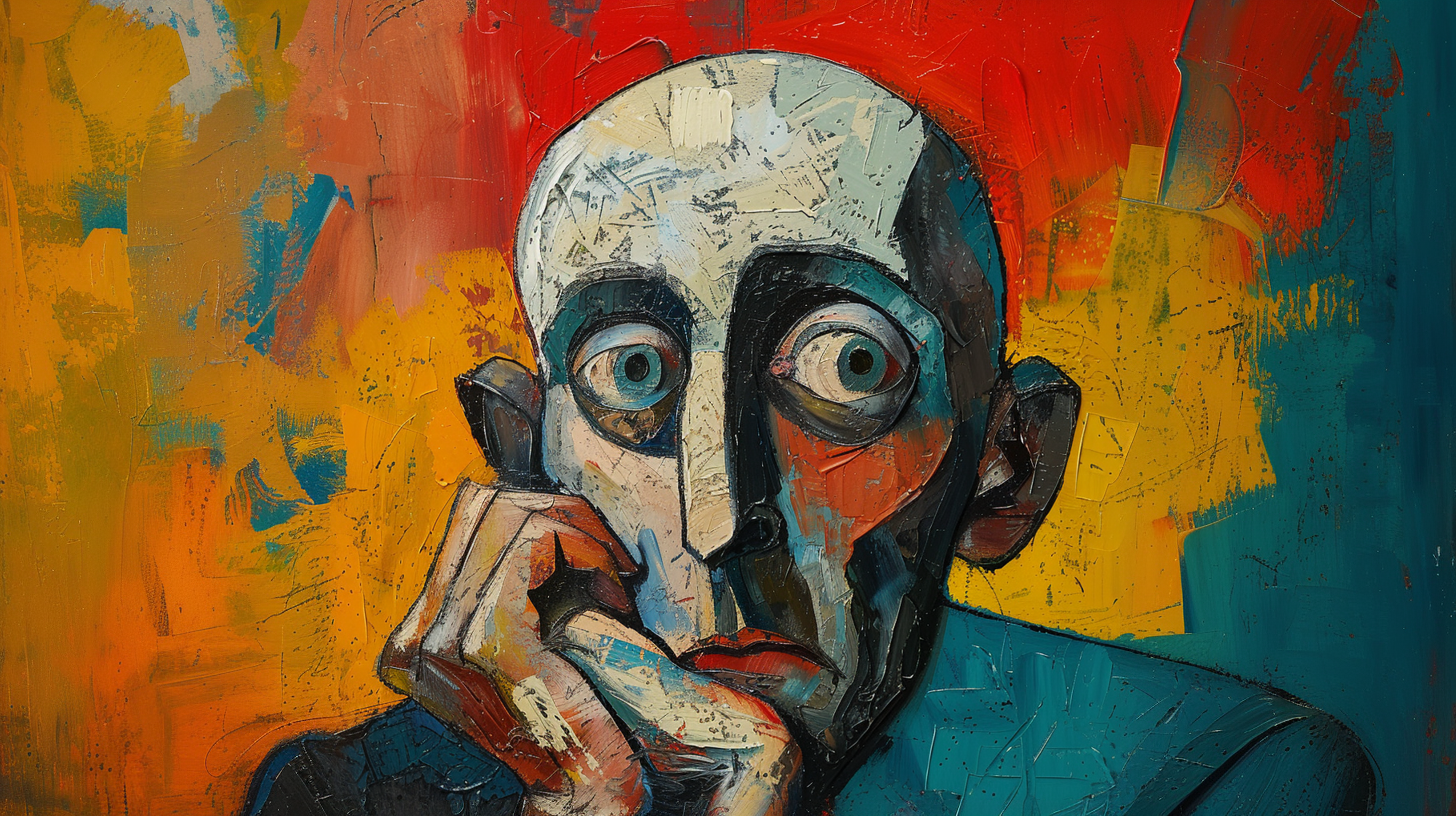
Bloom's (Revised) Taxonomy
Bloom's Revised Taxonomy was an update to the original framework for categorising educational goals. It shifts from a static understanding of learning to a more dynamic and nuanced model. The six levels are:
- Remember
- Understand
- Apply
- Analyse
- Evaluate
- Create
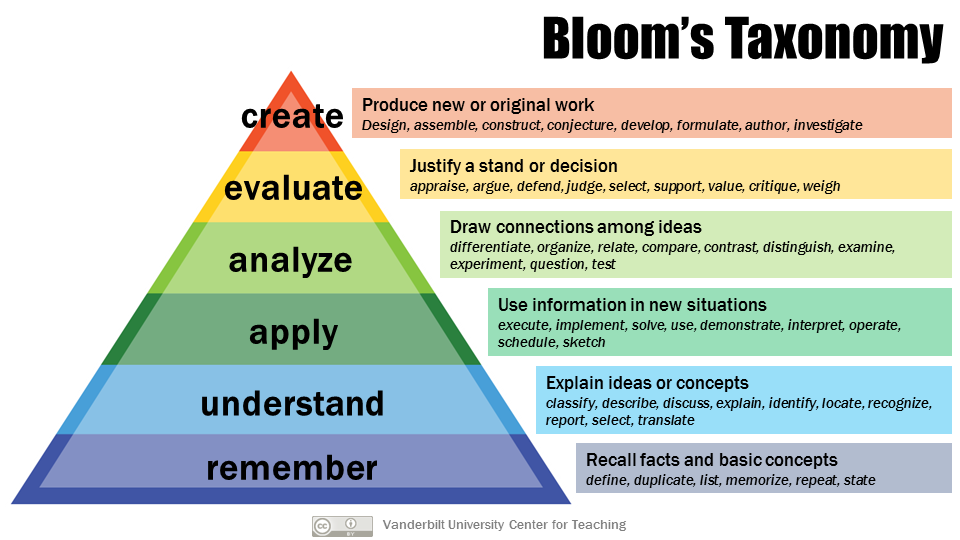
Explanation
The revision includes a shift from nouns to verbs, focusing on the cognitive processes involved. 'Create' sits at the top, highlighting its role as the ultimate expression of learning. Creating an artefact requires synthesising knowledge, applying concepts, and demonstrating a deep understanding of the subject matter. In many respects you could simplify the concepts so that you are asking the students to demonstrate their mastery of each stage of the verbage to demonstrate their developing understanding and progress.
Why Creation is the Ultimate Expression of Learning
Creation demands that students integrate their knowledge and skills to produce something new and valuable. It goes beyond rote memorisation or simple comprehension; it requires innovation and original thought, making it the highest level of cognitive activity. When students create, they are not just recalling facts or applying procedures; they are generating new ideas, solutions, and expressions. They are building something new that utilises their knowledge and skill acquisition and can even extend their thinking in numerous ways - it's a really cool thing. Being a Computer Science teacher I think I may have internalised this as nearly every aspect of my schemes of learning resulted in the creation of an artefact of some kind - heck, even my work at Mindjoy never feels like I've accomplished anything unless I can share an artefact I've produced with my colleagues.
Should we Abandon Creation?
If we remove 'create' from Bloom's Taxonomy, what are we achieving? The benefits of maintaining 'create' are numerous: it encourages innovation, demonstrates understanding, and showcases mastery. However, there are drawbacks, particularly with the rise of AI. The pedagogical issue lies in ensuring that students genuinely engage in the creation process rather than relying on AI-generated outputs. Not everything is about AI; the majority of works are still on paper in books, where the human touch is irreplaceable, and where the concerns about generative AI are mostly still academic.
Benefits and Drawbacks
Maintaining the 'create' level promotes a deeper engagement with the material. It encourages students to synthesise information and apply it in innovative ways. On the other hand, with generative AI, there is a risk of students bypassing this deep engagement, opting instead for AI-generated artefacts that may not reflect their understanding or creativity. The challenge is to ensure that the creation process remains a valuable educational experience despite the capabilities of AI.
If It's Still Valid, What Can We Do About It?
While there is a small subset of scenarios where traditional Bloom's Taxonomy may struggle due to generative AI, we can adapt. In situations where AI might play a role, we must pivot the 'create' section to include more detailed frameworks for creativity with AI.
The Evaluative, Iterative, Creative Element
Simply typing a prompt and accepting the first result is never enough - we know that - as professionals that use these creative tools who amongst us hasn't stayed up into the wee hours perfecting that prompt to ensure the ultimate Midjourney output? So if we're engaging to that level then there must be an evaluative and iterative process in place that is ensuring that we are still applying creativity and analysis to our creation. We need to teach students to refine their prompts, evaluate the AI-generated outputs, and iterate on their creations. This process not only ensures deeper learning but also integrates the strengths of AI into the learning process.
Incorporating AI in Creation
There is an art to using AI effectively in the creative process. It involves more than just generating a piece of work; it requires a critical eye to assess the output, refine it, and iterate until the desired result is achieved. This approach ensures that students engage in the higher-order thinking skills that Bloom's Taxonomy aims to develop.
Bloom's (Revised (Again)) Taxonomy
The traditional Bloom's triangle remains, but 'create' now includes a sub-triangle with additional layers:
- Explain the Problem: Articulate the problem you want AI to solve clearly.
- Create: Use AI to generate options or possibilities.
- Evaluate: Assess the effectiveness of the artefact for its intended purpose and audience.
- Edit: Modify the prompt and refine the output.
- Iterate: Repeat the process until the result satisfies the conditions.
- Defend: Be able to defend your creation from critique
This approach ensures that creation isn't a cop-out. Students must explain why their artefact represents the knowledge gained, thus deepening their understanding and demonstrating mastery.

Why Does this Work?
- Explain the Problem: This initial step involves clearly defining the problem or challenge that needs to be addressed. Students must articulate their understanding of the issue, which sets the foundation for the subsequent steps.
- Create: Using AI, students generate multiple solutions or artefacts. This step encourages exploration and creativity, allowing students to see the possibilities that AI can offer.
- Evaluate: Students critically assess the AI-generated outputs, considering factors such as relevance, accuracy, and creativity. This evaluation helps students develop critical thinking skills as they determine the strengths and weaknesses of each output.
- Edit: Based on their evaluation, students refine their prompts and modify the AI-generated artefacts. This step involves a cycle of editing and revising, which fosters an iterative approach to learning and creation.
- Iterate: The penultimate step is to repeat the process until a satisfactory solution or artefact is achieved. This iterative process ensures continuous improvement and deep engagement with the material.
- Defend: Finally being able to defend your creation based on the critique of other people knowledgeable in the field would showcase the student's mastery of the subject.
How Can We Support This with AI?
AI tutors can analyse freeform responses, challenging students to defend their decisions. This mirrors the 'defend your thesis' concept in academia, which has long been the gold standard for proving knowledge acquisition. By using AI to defend their work, students engage in higher-order thinking and critical analysis.
The Role of AI Tutors
We've developed an AI tutor modelled on this approach. Our 'Defend Your Essay' tool tutors students to paste their work and be challenged on weak arguments, logical fallacies, inconsistencies, and lack of evidence. This combats the misconception that AI can simply write essays for students without them needing to understand the content as students actually need to engage with the arguments they've presented to achieve highly in this activity.
Defend Your Decisions
The ultimate goal is to ensure that students not only create artefacts but also defend and understand them deeply. This approach promotes a higher level of engagement and learning. By integrating AI into this process, we can provide students with the tools they need to succeed in a world where technology plays an increasingly important role, and by using AI to ensure they can argue that their artefact represents their learnings means this becomes a scalable assessment process.
Beyond the Artefact
The creation of an artefact alone has always felt a little like a cop-out. I always wanted students to explain why they thought their artefact was a great representation of the knowledge gained. With AI, we can go beyond simple creation and focus on the thought process behind it. This adds a new layer of depth to the learning experience, ensuring that students are not only able to create but also to understand and articulate the value of their creations.
Conclusion
In conclusion, while generative AI poses challenges to the traditional model of Bloom's Taxonomy, it also offers opportunities to enhance the learning process. By integrating AI into the 'create' level, we can ensure that students engage in meaningful, higher-order thinking. This revised approach to Bloom's Taxonomy not only preserves the value of creation as an educational goal but also adapts it to the realities of the digital age.
Experience the Mindjoy difference yourself with a 14-day free trial and discover how AI can complement and enrich the learning experience in ways that are both meaningful and impactful. 🚀✨
